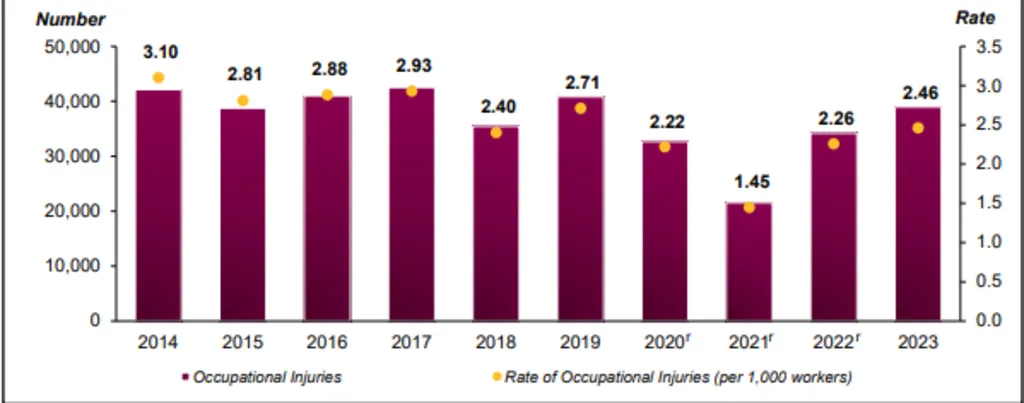Construction is one of the most dangerous industries in Southeast Asia. It accounts for 30-40% of all work-related deaths in the region. These alarming numbers highlight the urgent need for better safety measures. Through technological advancements and regulatory reforms, Southeast Asia is making strides toward safer construction practices. Take a look at Construction Safety Innovations in Southeast Asia below!
The Role of Design in Construction Safety Innovations in Southeast Asia

Studies show that 42% of construction-related accidents are linked to design choices. This makes “Design for Safety” a crucial factor in reducing risks. When safety is considered during the planning phase, many hazards can be eliminated before construction begins. For instance, incorporating safe access points or using lighter materials can reduce worker injuries.
Technological Advancements Saving Lives
Technology is revolutionizing construction safety in Southeast Asia. Mobile apps and artificial intelligence (AI) are helping predict risks by analyzing historical data. This allows project managers to take proactive measures before problems arise.
Wearable technologies like smart helmets and exoskeletons are also gaining popularity. Smart helmets monitor environmental factors like heat and air quality, alerting workers to potential dangers. Exoskeletons reduce physical strain, minimizing injuries caused by repetitive tasks. Together, these innovations create safer and more efficient worksites.
Training and Education in Construction Safety Innovations in Southeast Asia
Training programs are essential for improving safety. Countries investing in comprehensive training have seen significant results. For example, Singapore reported a 40% reduction in workplace injuries over five years. Additionally, the Philippines introduced initiatives such as safety drills and simulation-based training for construction workers to improve their preparedness for emergencies. Training workers to recognize hazards and use safety equipment properly can save lives and prevent costly accidents.
The Economic Impact of Unsafe Practices
Unsafe construction practices carry both human and economic costs, creating a ripple effect on national and regional economies. The International Labour Organization estimates that Southeast Asia loses around 3.94% of its GDP annually due to workplace injuries, unsafe conditions, and related incidents. These losses stem from multiple factors, including reduced productivity, extensive medical expenses, legal costs, and compensation claims.
Back in 2020, a high-profile construction accident in Malaysia led to weeks of delays and millions in compensation payouts, showcasing the tangible financial repercussions of inadequate safety measures. Moreover, these incidents tarnish the reputations of construction companies, making it harder to secure future contracts.
Construction Safety Innovations in Southeast Asia: Regulatory Reforms Driving Change
Governments across Southeast Asia are taking action to improve construction safety. The ASEAN OSHNET initiative, launched in 2015, has contributed to a 15-20% reduction in fatal accidents across member states. This initiative harmonizes safety standards, ensuring consistent practices throughout the region.
In Malaysia, the Construction Industry Transformation Programme (CITP) aimed to cut workplace fatalities by 50% by 2020. By 2019, the program had achieved a 37% reduction in fatalities. Similarly, Thailand’s National Master Plan for Safety led to a 25% decrease in workplace accidents within three years. These successes show how regulatory reforms can create safer environments for workers.
The Path Forward for Construction Safety Innovations in Southeast Asia
Southeast Asia’s construction sector is on the right track, but there’s still room for improvement. Integrating technology, improving training, and enforcing regulations must remain top priorities. Collaboration between governments, developers, and tech innovators is key to sustaining progress.
By focusing on safety, the region is not only saving lives but also enhancing productivity and reducing costs. These Construction Safety Innovations in Southeast Asia demonstrate that a safer construction industry benefits everyone—workers, developers, and the economy as a whole.






